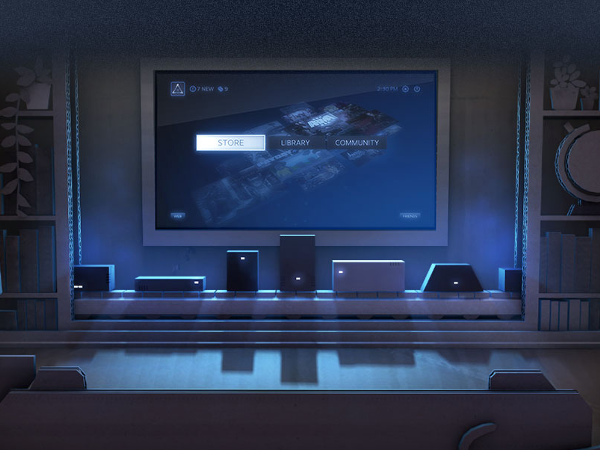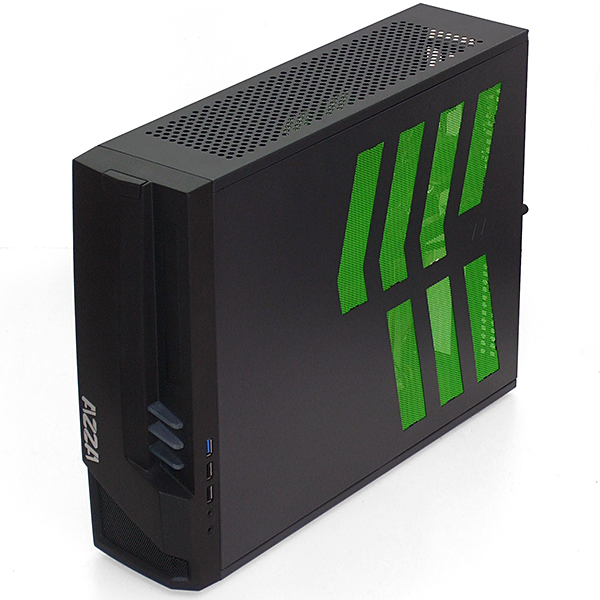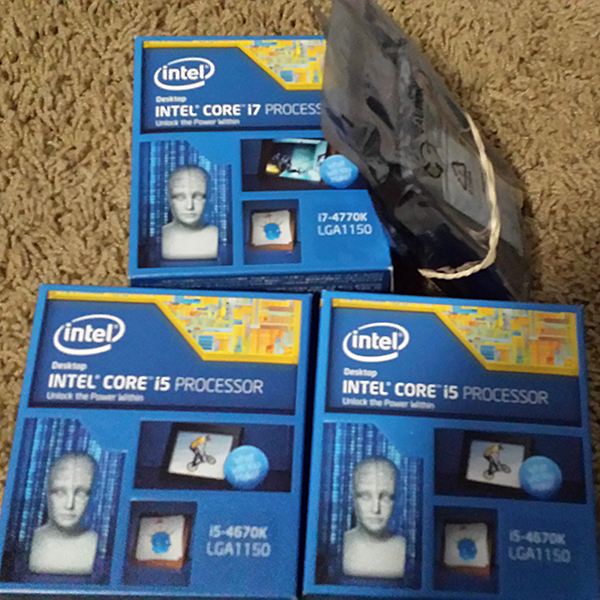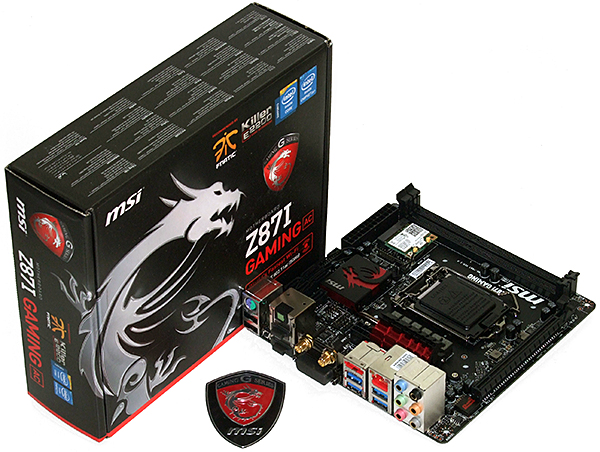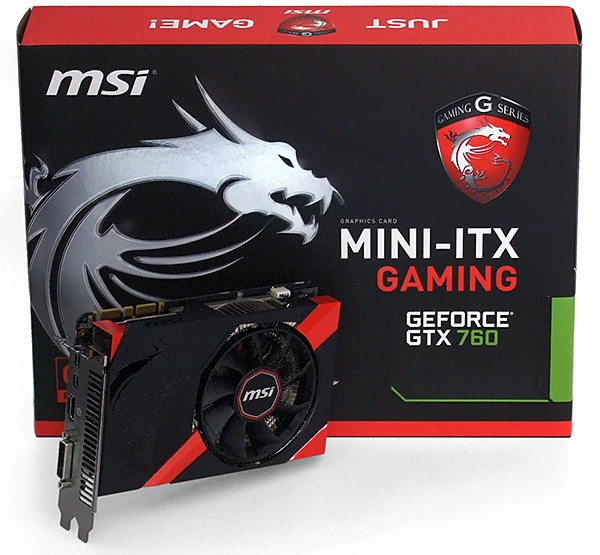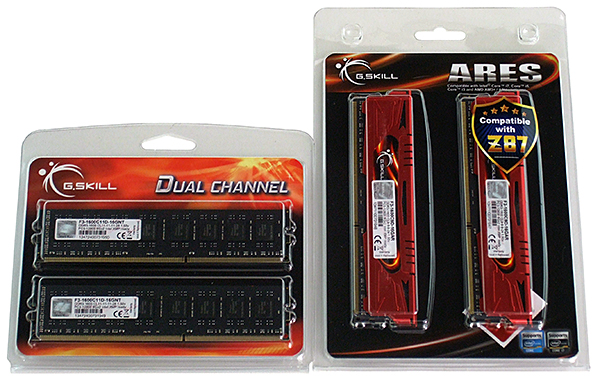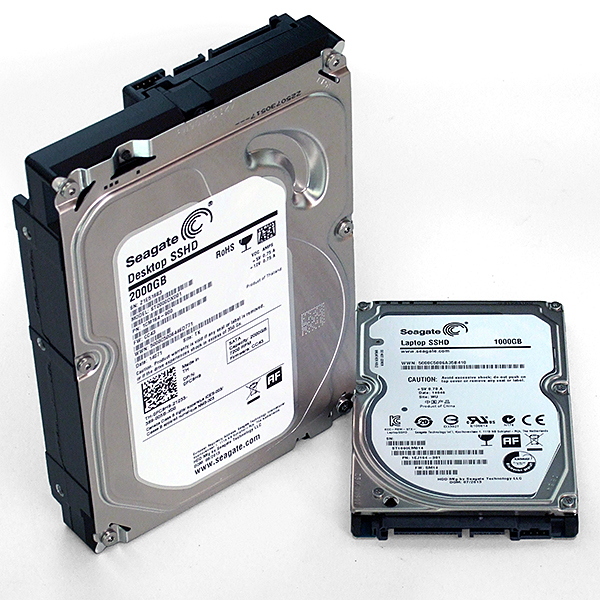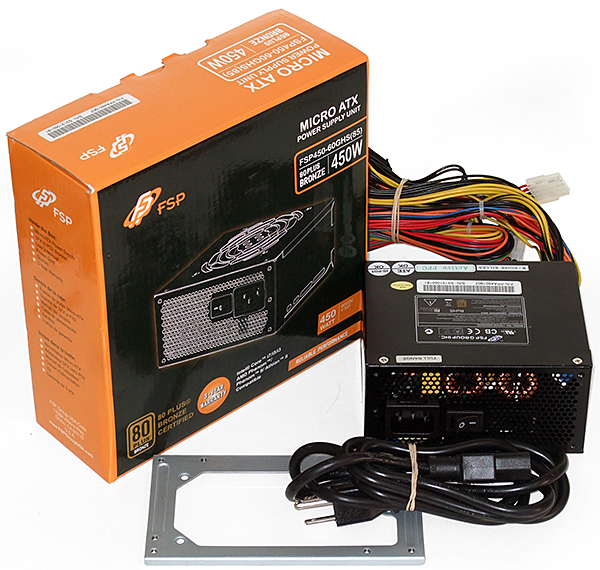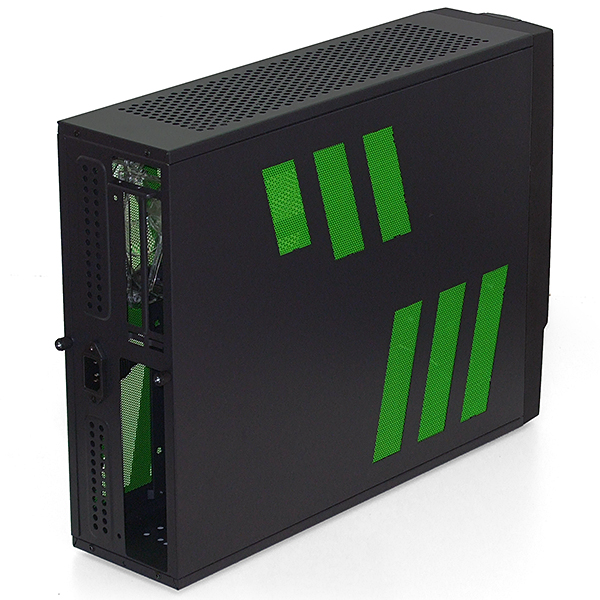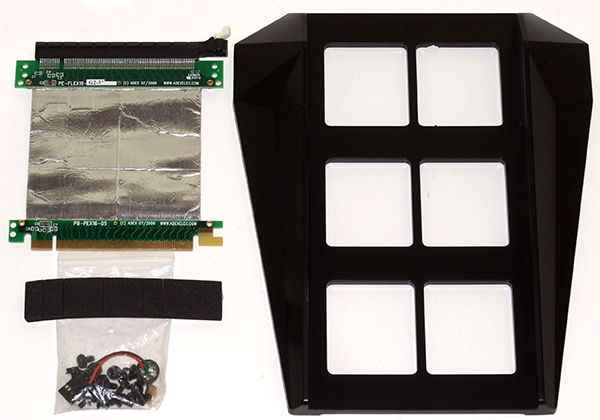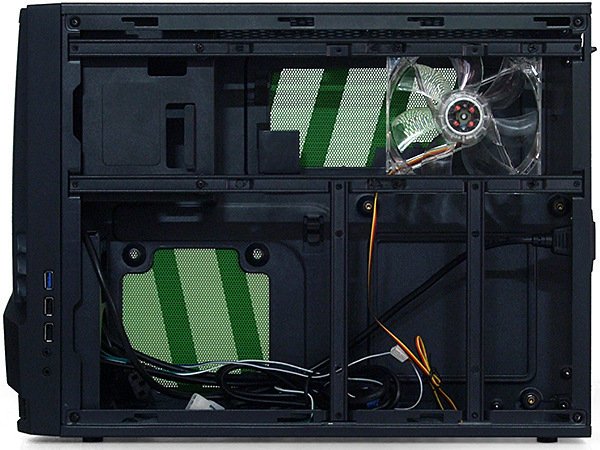Didn't Get A Valve Steam Machine Prototype? Build Your Own!
Hardware Made Easy
Designed as a platform for PC gaming, the specs of Valve’s newest creation should be familiar to most builders. While a much wider range of hardware has since been approved, we nevertheless choose to stick to the original specs. The first 300 Steam Machine prototypes leverage Intel CPUs, including the Core i7-4770, Core i5-4570, and unspecified Core i3 models. On the graphics side, Nvidia's GeForce GTX Titan, 780, 760, and 660 are the cards that were chosen. Sixteen gigabytes of DDR3-1600 is the only memory specification listed, and it's still unsure if that is a maximum or set standard. A 1 TB/8 GB Hybrid SSHD is the only storage spec listed, with a 450 W internal 80 PLUS Gold-certified PSU providing power to the prototypes.
Hey, we can do that!
The small, living room-friendly form factor is the most difficult of the Steam Machine prototype's specs to adhere to. At just 12" x 12.4" x 2.9" (305 x 315 x 74 mm), they're smaller than any currently available PC chassis capable of housing a full-sized graphics card and internal power supply. While we can't exactly match those specifications, we are keeping the slim theme...with an unreleased chassis.
And if you're one of three lucky winners, this will all be yours! Read on for more.
The Case: Azza Z
There's no better way to knock out a task than tackling the most difficult facet first. Steam’s reference designs are slim, and we wanted to replicate that size as closely as possible. But building something that small with high-end graphics requires a riser card.
Apart from ASRock's M8, which is already too big for this project, cases with riser cards are often custom-designed for PC manufacturers. None of our regular contacts had anything current to offer. This forced us to consider dumping the size limitations with a move to a "SteamBox" housed inside a BitFenix or other cube design. But then Azza got back to us.
While somewhat longer than the Steam Machine prototype specs, the Azza Z is the smallest case capable of handling a full-sized graphics card and internal power supply around...because it isn't.
Get Tom's Hardware's best news and in-depth reviews, straight to your inbox.
You see, the unreleased Azza Z is promised for retail sale by the end of the year. Luckily, the company is sending us a pre-production model for our reference design, plus three retail-ready cases for the giveaway!
Going With Intel: A Decision, Not A Requirement
Even though it's been confirmed that SteamOS will run on CPUs from AMD, we wanted to stick as close as possible to Valve's first 300 prototypes to avoid any unforeseen complications.
When we approached Intel about building a super-small gaming rig for the living room, the company loved our idea to promote small form factors. Among the parts Intel sent were a couple of Core i5-4670Ks and i7-4770Ks, one of which went into our reference build.
Along with the necessary CPUs was a trio of 240 GB SSD 530 drives. While we couldn't use the SSDs in our build (explained later), three already-lucky readers will nevertheless get to add them to their own Steam Machine.
With the platform secured, it was time to choose a motherboard.
Motherboard: MSI Z87I-Gaming
Though its high-value Z87I captured a Smart Buy award in our recent mini-ITX motherboard round-up, MSI had something a little more stylish in mind for our Steam Machine project.
Fortified with a Killer E2200 GbE controller and 802.11ac Wi-Fi, this little beast of a board can get connected in any living room, whether your media rack is wired or not.
We have a total of four of these improved-spec Z87I-Gaming motherboards: one for our Steam reference build and three for the giveaway winners.
Graphics: MSI Mini-ITX Gaming GeForce GTX 760
Since I already had the company on-board for the motherboard, I ran Valve's list of graphics cards by MSI as well. Good thing, too. Coincidentally, the company had already created the perfect companion product for its Z87I-Gaming platform.
MSI apparently saw the GeForce GTX 760's lower power consumption (relative to Nvidia's higher-end GPUs) as the perfect excuse to build a short version for compact cases. Supporting the same performance specs as our previously-reviewed samples, power input is down to a single eight-pin connection to reduce cable clutter.
Sure, our case didn’t require a shortened card, but the reduced length can seriously aid in the search for an even smaller chassis, and something tells us there will be a whole lot more of them on the market in 2014.
DRAM: G.Skill DDR3-1600 16 GB CAS 9
Valve listed a whopping 16 GB of RAM as the memory specification for its first 300 Steam Machine prototypes. While we now know that this is not a mandatory figure, the modules were easy enough to acquire, thanks to the folks over at G.Skill.
Most commercial builders stick with CAS 11 when choosing DDR3-1600, but that’s probably because it’s easy to find in bulk. We’re still not sure what Valve chose for latencies, but we have seen reduced latencies improve game performance. G.Skill sent both CAS 11 (Value Series) and CAS 9 (Ares) versions of its DDR3-1600 for us to compare. Three additional sets of the higher-end Ares F3-1600C9D-16GAR kits are making it into our giveaway.
Hard Drive: 2 TB Seagate SSHD Hybrid Drive
The goal of hybrid drives is to enable the benefits of solid-state storage at prices closer to mechanical disks. They do that by caching hot data on a small cache of intermediate flash. Algorithms monitor data access patterns and move the files you hit most often to the faster NAND. Valve said that its first 300 Steam Machine prototypes would include a 1 TB hybrid drive featuring 8 GB of solid-state storage. The company didn’t specify a form factor, but we’re guessing that means Seagate’s 2.5" ST1000LM014.
Cue up the next curve ball: our Azza Z only has 3.5” bays. Fortunately, Seagate overcame our case issue by upgrading us to its 3.5" 2 TB ST2000DX001, and the company is even supplying three more of the improved-capacity drives for our giveaway systems.
Oh, and Intel is also tossing a medium-capacity SSD into each prize bundle!
Power: FSP450-60GHS(85)
Many old-school builders vastly overestimate the amount of system power required for modern quad-core CPUs and a single GPU, and that’s probably why our case provider insisted upon using a regular PS/2 form factor power supply mount. But even though the mount was there, crowding a full-sized power unit and extra long cables into a small enclosure seamed a needless waste of effort in a system that we expected to top out well under 400 W.
Fortron Source (FSP) is one of our top two contenders for SFX form factor power units, offering a 450 W output and 80 PLUS Bronze rating, along with the bracket required to fit this compact part onto the mounting holes of its big brother. The unit provides 36 A of +12 V power to exceed the needs of our Core i5-4670K and GeForce GTX 760, even when overclocked.
System Assembly Begins
Remember that the Azza Z is mostly deeper than Valve's prototype specs and only a hanful of miliimeters larger in width and height. To meet the small height requirement and still contain a high-end GPU, this enclosure utilizes a riser card which rotates the graphics board clockwise by 90 degrees.
Clearly, with both the motherboard and graphics card oriented horizontally on the rear panel, the power supply isn't done any favors. This is largely why the Azza Z has that extra depth. You see, the Z makes room for a motherboard and graphics card at the rear by locating the power supply up front. An extension cable is routed to the external power connector towards the center of the rear panel.
Also remember that the Azza Z can accommodate a full PS/2 PSU. If only SFX form factor power supplies like the one we chose were more abundant...
Finding Parts
Because we're working with an unreleased case, Azza hasn't yet received its retail Z-chassis riser cards. Instead, the company included a flexible cable with our prototype.
Also included in the accessory pack is a bag of screws and a stand for vertical orientation. If the stand looks small, that's because it's mounted in the center of the case's right side.
Opening Up
Unlike Valve's reference Steam Box designs and more in line with iBuyPower's upcoming system, the Azza Z can be used either horizontally or vertically thanks to the previously-mentioned stand. A system of internal braces helps support the side panel as a “lid” when configured horizontally.
Despite its small size, the Z can also hold up to three 120 mm fans. Alternatively, Azza designed the top two fan mounts to hold a 240 mm (120 x 240 mm) compact liquid cooling system up to 2” thick, which covers more than a few popular closed-loop options.
-
goodguy713 That's pretty awesome that they put up all of those parts for the contest. I would love a steam box personally. And pretty cool build too. Ill keep my fingers crossed.. lolReply -
antemon eh, wait till it hits the market. I'm sureReply
A) manufacturers will start shelling out slim SFF cases similar to the steam machine designs
B) you can buy broken steam boxes from ebay and salvage the case -
Jgriff Already have my steam box in a Fractal design node 304. Couldn't be any happier with that case.Reply -
Menigmand Huge amounts of wasted space in that case, even with the clever riser cable trick.. I don't get it.Reply -
Crashman Reply
The selection was "made for us" when nobody could provide a suitable alternative. There were some alternatives in the past, but those are no longer in production. And there will be some alternatives in the future, but those aren't being produce yet.12193628 said:Huge amounts of wasted space in that case, even with the clever riser cable trick.. I don't get it.
The past cases were Micro ATX based. I believe this new one might be made of some of those parts. But its manufacturer came up with a new reason not to reduce its size from former glory: It added a large radiator mount. Azza's new target market will be slim gaming system overclockers, even though it appears that the previous version of this case was probably an office desktop (or Micro ATX media center). Meanwhile, a Tom's Hardware team member or two will continue watching for even smaller alternative cases.
-
aatir Its nice and all but would not a person be limited for future upgrades with this i would rather prefer a full tower or mid-tower PC.Reply
